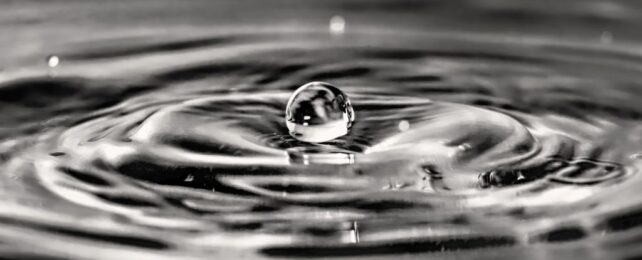We all know the ingredients for water. You take two atoms of hydrogen and one of oxygen, moosh them together just so, and voila – you have a molecule of the most important compound to life on Earth.
Now, for the first time, scientists have observed this process in action up close. In real-time, and on a molecular scale, materials scientist Vinayak Dravid of Northwestern University and his colleagues watched as the tiniest bubble of water ever seen bloomed seemingly out of thin air.
How did they do it? By harnessing the strange powers of palladium, a metal that is known to catalyze the two elements to synthesize water.
"Think of Matt Damon's character, Mark Watney, in the movie The Martian," Dravid says. "He burned rocket fuel to extract hydrogen and then added oxygen from his oxygenator. Our process is analogous, except we bypass the need for fire and other extreme conditions. We simply mixed palladium and gasses together."
We've known about palladium's strange ability to synthesize significant amounts of water in a relatively short amount of time. But how exactly it works has been tricky to pin down. This is because it's hard to observe the process on the scales at which it occurs.
"You really need to be able to combine the direct visualization of water generation and the structure analysis at the atomic scale in order to figure out what's happening," explains materials scientist Yukun Liu of Northwestern University.
To overcome this significant obstacle, the team developed a membrane that traps molecules inside tiny, hexagonal nanoreactor cells. This makes it easier to image molecular processes using transmission electron microscopy, down to the nanometer scale.
Even so, the researchers were not sure that their attempt to directly observe the palladium reaction would be successful. They added hydrogen and oxygen atoms to the surface of a 20 nanometer-wide piece of palladium, and used their membrane to capture the ensuing interaction.
A single water molecule is less than a third of a nanometer across, while the atoms they consist of are far, far smaller. To 'see' the bonding of these tiny compounds, the researchers used a form of electron microscopy that recorded energy lost by scattering electrons.
To their surprise, they were able to observe, in real-time, atoms combining to form a tiny bubble of water on the palladium surface.
"We think it might be the smallest bubble ever formed that has been viewed directly," Liu says. "It's not what we were expecting. Luckily, we were recording it, so we could prove to other people that we weren't crazy."
Next, they experimented with trying to streamline the process, adding the hydrogen and oxygen gasses separately. They were able to determine that the process takes place in two steps. First, the hydrogen atoms squeeze into the surface of the palladium, inserting themselves into the atomic lattice and inflating the surface of the metal, causing it to expand.
Then, when the oxygen is added, the hydrogen emerges from its palladium hideyholes and merges with the oxygen to create droplets of water. The palladium, meanwhile, relaxes back to its original un-puffy state.
"Palladium might seem expensive, but it's recyclable," Liu says. "Our process doesn't consume it. The only thing consumed is gas, and hydrogen is the most abundant gas in the universe. After the reaction, we can reuse the palladium platform over and over."
It's such a simple process, and one that can be scaled. All you need is a bigger piece of palladium. Given a steady supply of recycled oxygen and hydrogen, molecules of water could be built from scratch on a lunar habitat, a Mars base, a space station, or maybe a long-haul spaceflight to the stars.
A sizable enough piece of palladium could supplement the water supply off Earth where water is scarce and recycled wee is on the menu. We imagine palladium juice might be a welcome change.
The research has been published in the Proceedings of the National Academy of Sciences.
